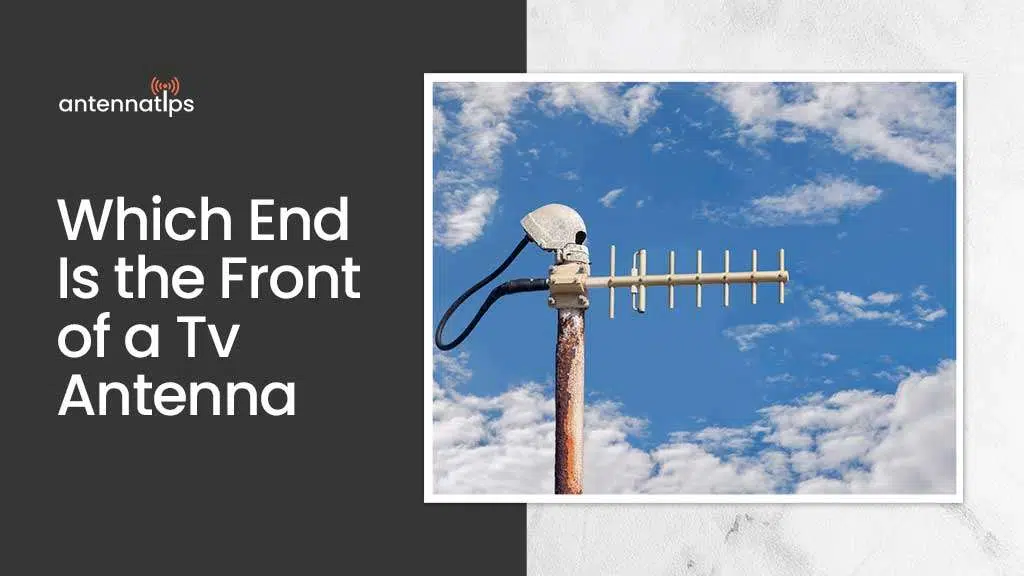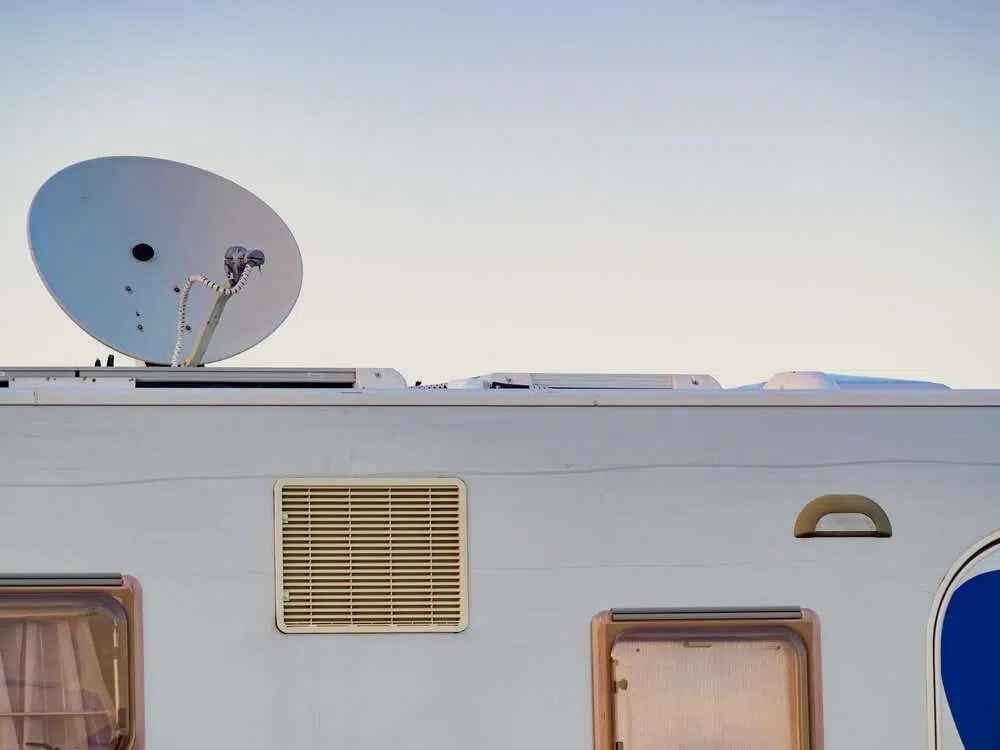
Because you have to direct the front of the antenna to the line of sight of the broadcast tower. And it might really be confusing at first. You have to orient your outdoor TV antenna in the proper way to get clear and crisp signals. Therefore, we need to find out, which end is the front of a TV antenna?
There are different types of antennas. All of which have different shapes. So it might be confusing to find the front part of the antenna. There isn’t a single answer for all. And it would depend on what type of antenna you’re using.
But it does not need to be complicated! If you’re still confused, we’re here to help you sort it out.
Which End Is the Front of a TV Antenna?
To answer the above question. I’m going to list several shapes and types of antennas. Then we will determine which end is the front of a TV antenna!
1. Yagi style antennas
These traditional antennas are the most confusing to figure out. The key here is to look for the narrowest point, which will be the front of the antenna. The longest element goes to the back, assuming it’s mounted in a horizontal orientation.
You might also want to check where the smallest elements are. This will also give you a clue on where the front of your antenna is.
2. Hybrid antennas
Hybrid antennas have more of a modern style. It is more compact than the traditional Yagi antennas. How to determine the front part? It’s basically the same as the yagi antennas. The smallest or the narrowest part is the front.
You can also check for the reflectors. Both the top and bottom parts of the reflectors must point to the front of the antenna.
3. Bowtie antennas
Let’s look at the two major parts of this antenna to know where to aim it. Bowie antennas have a receiving element and reflectors. The receiving element is in the shape of an x or bowie while the receiving element is the horizontal bars.
The horizontal bars are placed at the back. And the receiving element should be aimed 90 degrees to the transmission towers. This type of antenna can be quite forgiving. Meaning you can still receive signals even if it’s not positioned properly. But you might want to maximize the capacity of the antenna by properly directing the front part to the transmission towers.
4. Panel antennas
This type of antenna is the most challenging to decipher. Because the antenna is covered in a plastic white box, it can be tricky to gauge which part is the front. Still, there’s an easy way to know-how. The smooth side is the front part of the panel antenna. You’d notice that one part of the panel has mounting hardware for cable connections. This is the back part.
5. Omnidirectional antennas
Omnidirectional or multidirectional antennas often have a UFO-like shape exterior. Since they’re multidirectional, you don’t have to aim the front to the antenna to the transmission towers for it to work.
How to Boost Antenna Signal
Nobody likes patchy images and chappy sounds. If it isn’t a clear and crisp picture, you’re ain’t going to what TV! To boost your antenna signal, you can do these simple steps.
1. Locate where the broadcast tower in your area is
If you live near broadcast transmission towers aka 15 miles away, you’d be able to determine the exact location easily. But if you are a bit far from the towers, you’ll need to search for them.
You can also take a look at your neighbor’s antennas and see where they aimed their antenna at. That’s a viable solution if you don’t want to do a bit of research. Alternatingly, you can hover through mapping tools and antenna direction indicators such as tvfoolt.com to see where the broadcast towers in your area are located.
2. Mount your antenna outdoors or near a window
Outdoor mounted antennas can give you the clearest line of sight. Since there is less interference such as a thick roofing material, this will help your antenna pick up clear signals.
But if you can’t mount your antenna outdoors, you can also have one in your attic. Place it near a window. Just make sure to face the white side to the outside. This will prevent your antenna from absorbing too much heat from the sun.
3. Mount the antenna as high as you can
To bypass interferences, you have to mount your antenna as high as you can. Or as high as your circumstances allow you to. That’s why outdoor antennas are king when it comes to the number of channels. Because the higher the antenna is mounted, the better the signal.
4. Do not place your antenna near metal objects
Metal can cause signal interferences. So you might want to mount your antenna away from any metal objects.
5. Test different placements
To get the best position, it’s ideal to test placements before you tighten the connection. Keep on trying different placements until you can find one that can pick up the most number of channels. And of course, it can help your antenna pick up the clearest signal too.

How to Point RV TV Antenna
If you’re using an omnidirectional antenna, you don’t need to locate the direction of the transmission tower. But if you’re using a directional antenna, you need to find where the broadcast tower is located.
-
- Make sure to park your RV where there is less signal interference. Higher grounds such as hills are preferable over valleys and plains. You might encounter a lot of interference if you’re going to park on lower grounds.
- A signal meter is the best and easiest way to help you determine where to point your antenna to. Mount it on your RV and this will come in very handy.
- Try on different placements of your antenna and watch the reading on the signal meter.
- Keep an eye on where the signal reads the strongest. And this is where you should direct the front of your antenna to.
- Also, check your coaxial cables. High-quality coaxial cables will help boost your antenna’s performance
- Alternatingly, a TV booster will also help you boost your RV tv antenna.
FAQs
Does aluminum foil boost the antenna signal?
How do I locate the broadcast towers to aim my TV antenna?
My local towers are not within line-of-sight, what do I do?
Why is it important to properly aim your antenna?
Conclusion
Which way do I point my TV antenna?
Now you can answer this question confidently and easily. Knowing which end is the front of a TV antenna will help you position your antennas properly. Whether you’re at home or in an RV, proper positioning of the antenna is crucial to get a clear signal. And of course, it can pull in tons of channels too!